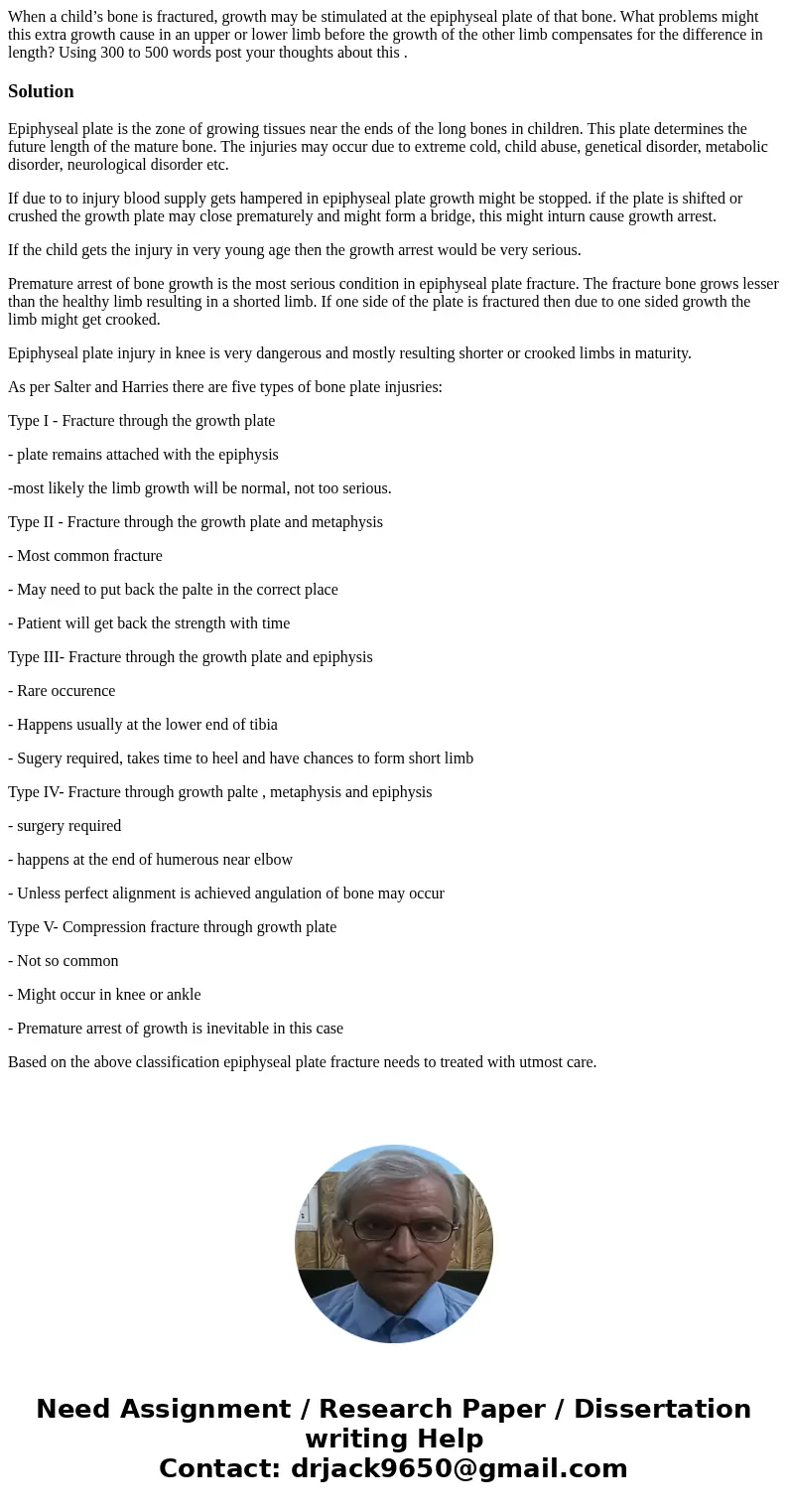When a childs bone is fractured growth may be stimulated at
When a child’s bone is fractured, growth may be stimulated at the epiphyseal plate of that bone. What problems might this extra growth cause in an upper or lower limb before the growth of the other limb compensates for the difference in length? Using 300 to 500 words post your thoughts about this .
Solution
Epiphyseal plate is the zone of growing tissues near the ends of the long bones in children. This plate determines the future length of the mature bone. The injuries may occur due to extreme cold, child abuse, genetical disorder, metabolic disorder, neurological disorder etc.
If due to to injury blood supply gets hampered in epiphyseal plate growth might be stopped. if the plate is shifted or crushed the growth plate may close prematurely and might form a bridge, this might inturn cause growth arrest.
If the child gets the injury in very young age then the growth arrest would be very serious.
Premature arrest of bone growth is the most serious condition in epiphyseal plate fracture. The fracture bone grows lesser than the healthy limb resulting in a shorted limb. If one side of the plate is fractured then due to one sided growth the limb might get crooked.
Epiphyseal plate injury in knee is very dangerous and mostly resulting shorter or crooked limbs in maturity.
As per Salter and Harries there are five types of bone plate injusries:
Type I - Fracture through the growth plate
- plate remains attached with the epiphysis
-most likely the limb growth will be normal, not too serious.
Type II - Fracture through the growth plate and metaphysis
- Most common fracture
- May need to put back the palte in the correct place
- Patient will get back the strength with time
Type III- Fracture through the growth plate and epiphysis
- Rare occurence
- Happens usually at the lower end of tibia
- Sugery required, takes time to heel and have chances to form short limb
Type IV- Fracture through growth palte , metaphysis and epiphysis
- surgery required
- happens at the end of humerous near elbow
- Unless perfect alignment is achieved angulation of bone may occur
Type V- Compression fracture through growth plate
- Not so common
- Might occur in knee or ankle
- Premature arrest of growth is inevitable in this case
Based on the above classification epiphyseal plate fracture needs to treated with utmost care.

 Homework Sourse
Homework Sourse